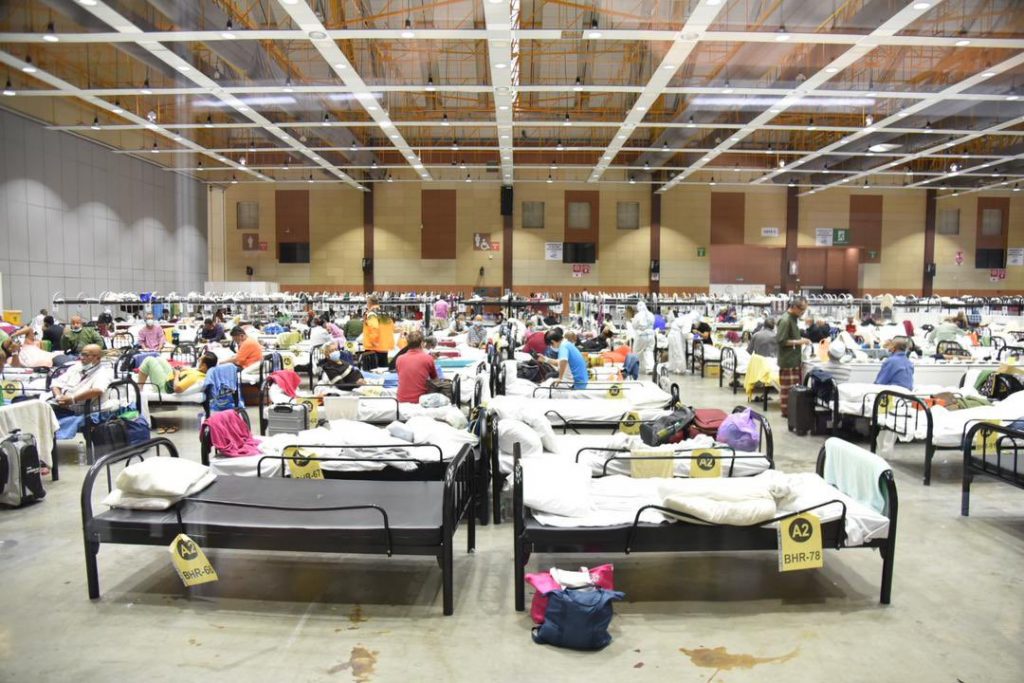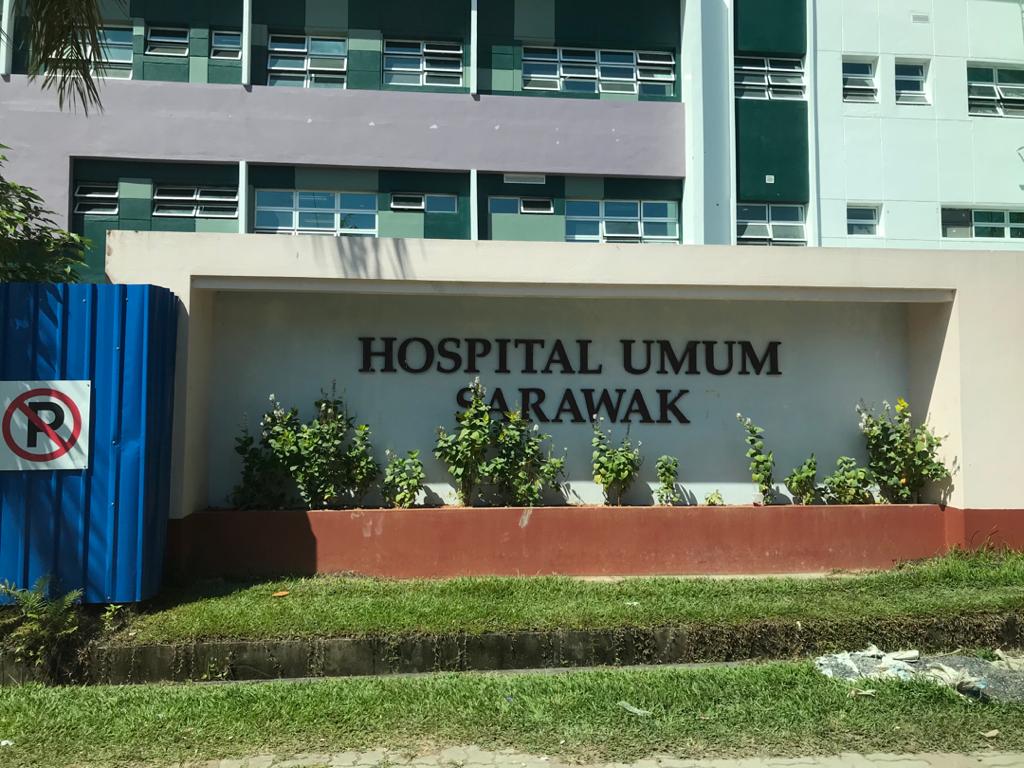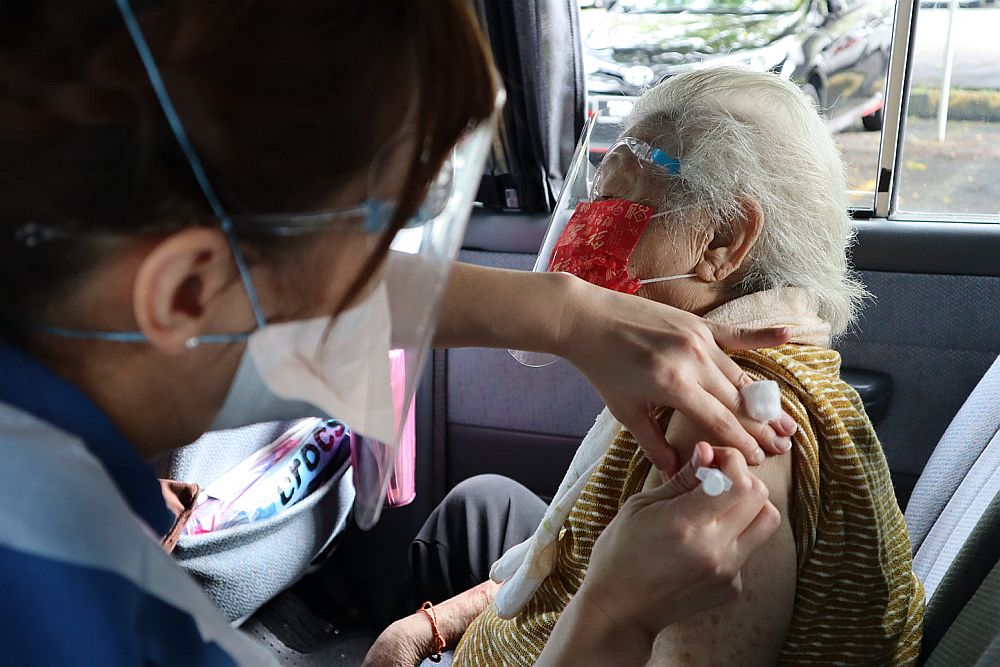KUALA LUMPUR, Sept 10 — Klang Valley hospitals reported fewer Covid-19 patients in the past month, as the industrial region’s expedited vaccination programme and coordinated efforts to reinforce the health system saw new infections fall to June levels.
At UKM Specialist Children’s Hospital (HPKK UKM), new Covid-19 admissions dropped to half their peak in recent weeks, while Ampang Hospital’s daily Covid-19 referrals declined from about 100 per day in July to an average 20 to 30 per day currently.
“This is because we’re now allowed to send Category 3 Covid-19 patients to MAEPS (Malaysia Agro Exposition Park Serdang). Patients that require observation, but not further treatment, have been placed there (at MAEPS).
“Referrals from the Covid-19 Assessment Centre (CAC) have also declined as things are more manageable on the ground now with the virtual CAC,” said Dr Abu Bakar (pseudonym), an Ampang Hospital doctor, who spoke to CodeBlue on condition of anonymity.
This is in contrast to the disastrous situation in July when a vicious surge in Covid-19 cases saw hundreds of severely ill Covid-19 patients being transferred each day from MAEPS, a Covid-19 quarantine and treatment centre (PKRC), to two of the country’s designated coronavirus hospitals, Sungai Buloh Hospital and Ampang Hospital.
Other hybrid hospitals across the Klang Valley — such as Hospital Kuala Lumpur (HKL), Hospital Tengku Ampuan Rahimah (HTAR) and Selayang Hospital — also reported increased admissions of critically ill Covid-19 patients requiring oxygen, forcing wards and entire floors to be converted at breakneck speed into Covid-19 treatment areas.
Selayang Hospital and Serdang Hospital were subsequently turned into full Covid-19 hospitals, although CodeBlue understands that the two public health facilities are currently shifting back into hybrid hospitals by gradually reopening their surgical as well as obstetrics and gynaecology services to cope with the backlog of non-Covid cases.
The hospitals’ top management did not immediately respond to CodeBlue’s request for confirmation and further comment on the matter.
At Ampang Hospital — which earlier reported a record number of daily Covid-19 deaths due to oxygen pressure imbalances from the hospital’s high-volume usage — the situation is now more manageable after steps were taken to increase its intensive care bed capacity and optimise its oxygen pressure levels.
“The hospital can now effectively monitor the oxygen pressure levels, so we are not desperately pushing patients in and out of wards that have below-normal oxygen pressures. We can now be more systematic at balancing out the number of patients and oxygen levels at each ward,” said Dr Abu Bakar. However, he noted that patients requiring oxygen therapy remain high.
Klang Valley’s Covid-19 intensive care unit (ICU) bed occupancy rates receded by 45 per cent from a peak of 713 patients on July 13 to 393 patients on September 7, as coronavirus hospital admissions fell 72 per cent from a high 1,039 cases on July 30 to 289 cases on September 7.
Currently hospitalised Covid-19 cases have also improved, declining from a high 6,250 cases on August 8 to 2,580 cases on September 7, according to Ministry of Health (MOH) data.
Health Minister Khairy Jamaluddin yesterday said that daily Covid-19 fatalities in Selangor are actually on the decline, citing data discrepancies due to MOH’s delayed death reporting. Nonetheless, Selangor still reported the highest number of Covid-19 deaths per capita in the past fortnight at 22.6 deaths per 100,000 people, exceeding the national 13.3 rate, according to MOH’s new COVIDNOW site that tracks Covid-19 data.
Rapid Deterioration From Mild Covid-19, Backlog Non-Covid Cases

Dr Abu Bakar said that while Covid-19 infections have declined, the situation in Klang Valley remains fragile. With Delta being the dominant coronavirus strain in the country, he said Covid-19 patients can deteriorate from Category Two (mild) to Category Four (severe) in under 24 hours.
“To some extent, yes, vaccinations have brought cases down and alleviated some burden on Covid-19 hospitals like Ampang, but we still have those patients at MAEPS and those under home quarantine that, at any time, may turn into Category Four,” Dr Abu Bakar said.
According to the COVIDNOW website, among the 248,676 active Covid-19 cases nationwide as of Wednesday, 83.7 per cent, or 208,242 people, are on home quarantine, while 25,383 people (10.2 per cent) are isolated in PKRCs.
Dr Chew (pseudonym), a house officer at HPKK UKM, pointed out that shortage of manpower remains an issue as there is still a severe lack of house officers.
“House officer to patient ratio is still bad. We’re all just waiting for the new intake of house officers to come in. At the moment, it’s probably about 1:10-20 patients depending on the department,” said Dr Chew, who requested anonymity.
Dr Aishah (pseudonym), a doctor at a university hospital in Kuala Lumpur, said the doctor to patient ratio at her facility is better at about 1:7-8 patients. However, this is made possible because many of the hospital’s medical services were shut down.
“With the shutting down of services, we were able to mobilise people (to manage Covid-19 cases). Everything is scaled down, so elective cases and clinics are fewer. But this means we will feel the brunt of these backlog cases in probably two to three months.
“Things like elective surgery will likely end up becoming emergency; a lot of clinic appointments have been pushed back. I have a neighbour who told me that her mom’s appointment has been postponed twice, so these things will surely mount up soon,” Dr Aishah said.
She expects the next few weeks up until October to be tricky as Klang Valley moves into Phase Two of the National Recovery Plan, which will see more restrictions being lifted.
Sarawak: A Case In Point

Exhausted health care workers are worried that authorities are giving a false sense of security by overestimating hospitals’ capacity to care for critically ill patients. They fear that Sarawak’s recent relapse will occur in the Klang Valley.
Sarawak — which has one of the highest vaccination rates in the country at 88 per cent of adults fully inoculated — reported 3,747 new Covid-19 infections on September 5, a historical high since the start of the epidemic. It recorded 21,950 cases in the past week from September 2 to 8, which is equivalent to over 55 per cent of 39,830 total cases the state reported for the entire month of August.
Covid-19 deaths in Sarawak have also increased to 60 fatalities in the past week alone. In August, the state reported a total 63 Covid-19 deaths.
Similar upticks can be seen in Sarawak’s hospitalisation rate, hospital admissions, and ICU cases. Despite recording declines between June and July, all three indicators have been rising since mid-August.
Sarawak’s hospitalisation rate more than doubled from 295 cases on August 14 to 684 on September 8, as hospital admissions jumped five-fold from 77 cases to 390 cases over the same period. ICU cases also climbed from a low 22 cases on August 1 to 90 cases on September 8, MOH data showed.
Experts recently point to factors such as the type of vaccines used and the effectiveness of public health measures like testing and contact tracing as potential reasons for the rising cases in Sarawak. Khairy yesterday did not discount the possibility of waning vaccine efficacy in the state that was among the first out of the gate with vaccinations, saying that the JKJAV vaccine committee would soon issue recommendations on booster shots.
Breakthrough Infections In People With Comorbidities, Cancer Patients

Klang Valley is also not spared from breakthrough infections. Dr Aishah confirmed that cases among fully vaccinated people have been reported at her university hospital in Kuala Lumpur.
Dr Abu Bakar also noted that there have been confirmed Covid-19 cases at Ampang Hospital among fully vaccinated people — defined as two weeks after the second dose — albeit very few.
He said cases among fully vaccinated individuals so far consist of people with underlying conditions, such as diabetes, high cholesterol, or those undergoing chemotherapy treatment.
The majority of Covid-19 patients admitted remain those who are unvaccinated, those partially inoculated with a single shot, or those within two weeks of the second dose, Dr Abu Bakar said.
“This means that other factors are at play for fully vaccinated individuals with Covid-19. In this respect, we have to be careful in putting the blame on vaccinations because as the drop in our hospitalisation rates, hospital admissions, and ICU cases show, vaccinations do work.”
Khairy yesterday said breakthrough deaths involving fully inoculated people are very rare in the country at only 90 people per 1,000,000 vaccinated population, or a 0.009 per cent breakthrough rate in deaths reported to date.
He added that among the reported breakthrough deaths, 81 per cent had comorbidities, and 80 per cent were over the age of 60 — all factors that contributed to the outcome of mortality in those cases.
Vaccine breakthrough infections in fully vaccinated people increased in Malaysia from 12.6 per cent of total Covid-19 cases reported on August 12 to 35.1 per cent on September 8. MOH reported more than 5,000 fully vaccinated Covid-19 cases daily since August 31, including more than 6,900 on September 8.
MOH reported a high 28.7 per cent share of fully vaccinated people in Covid-19 cases requiring hospitalisation in Categories Three to Five on September 6. As of September 8, about 71 per cent of Malaysia’s adult population has been fully inoculated.








